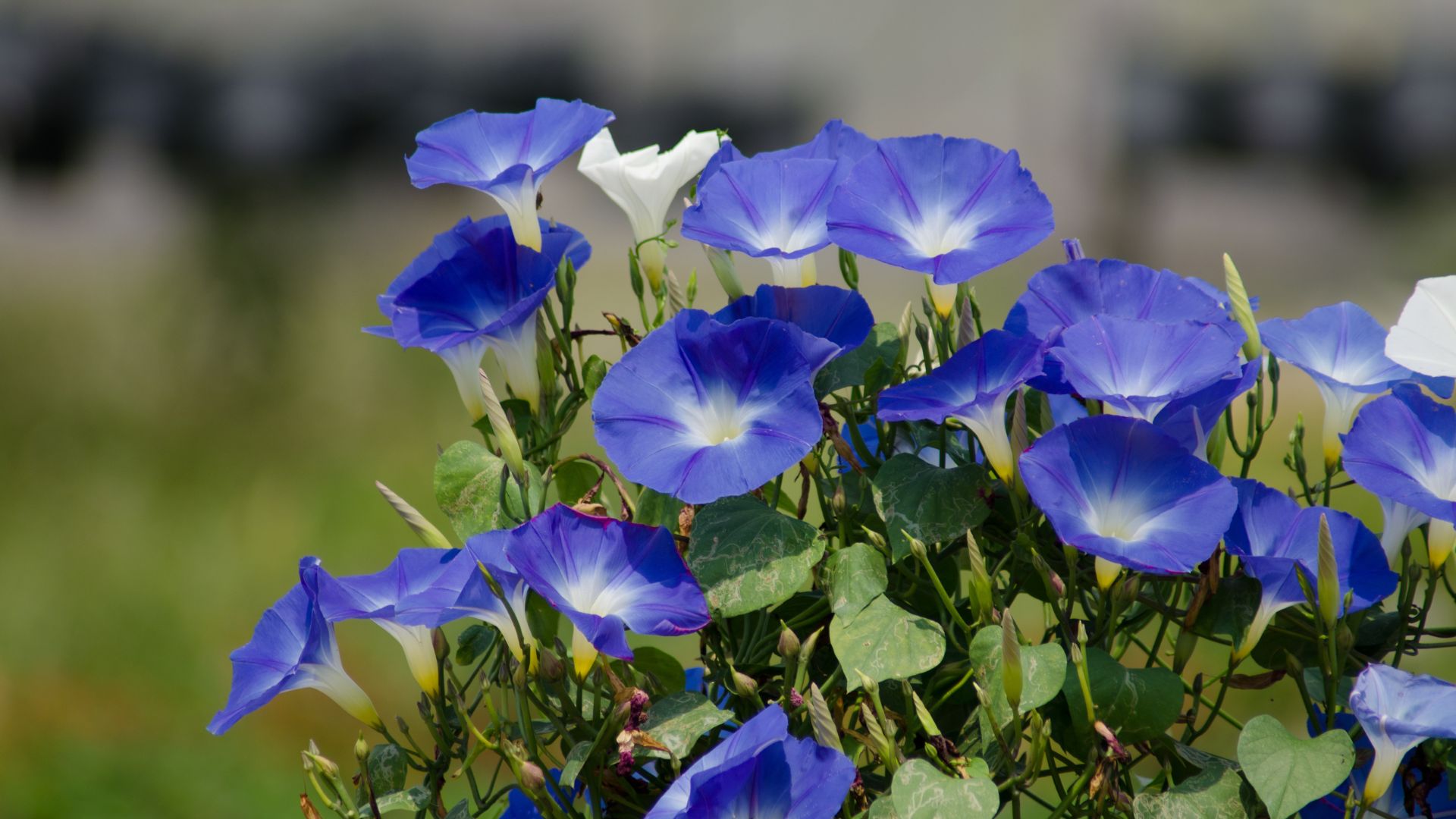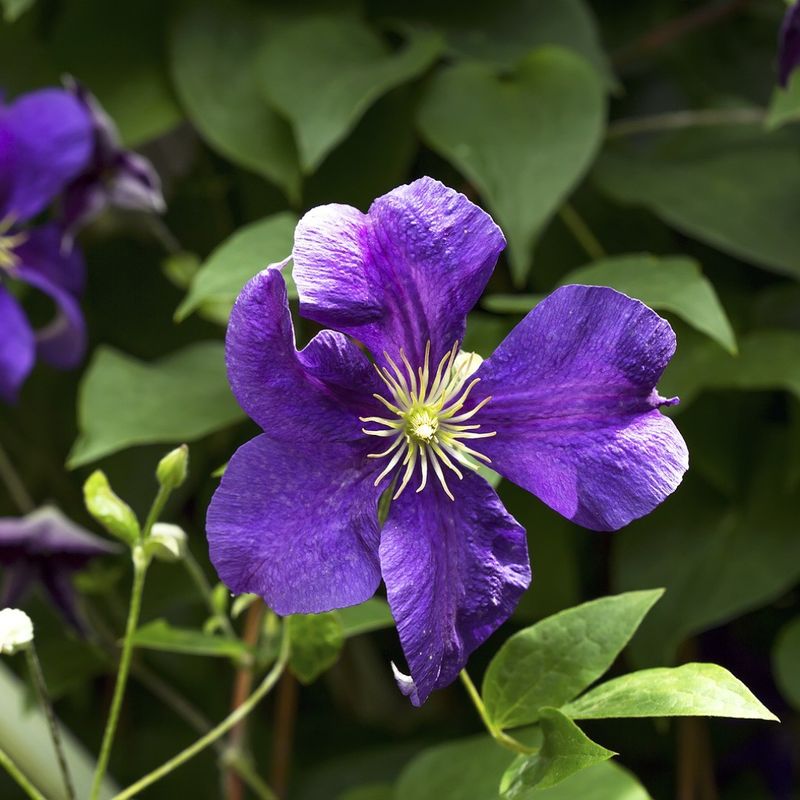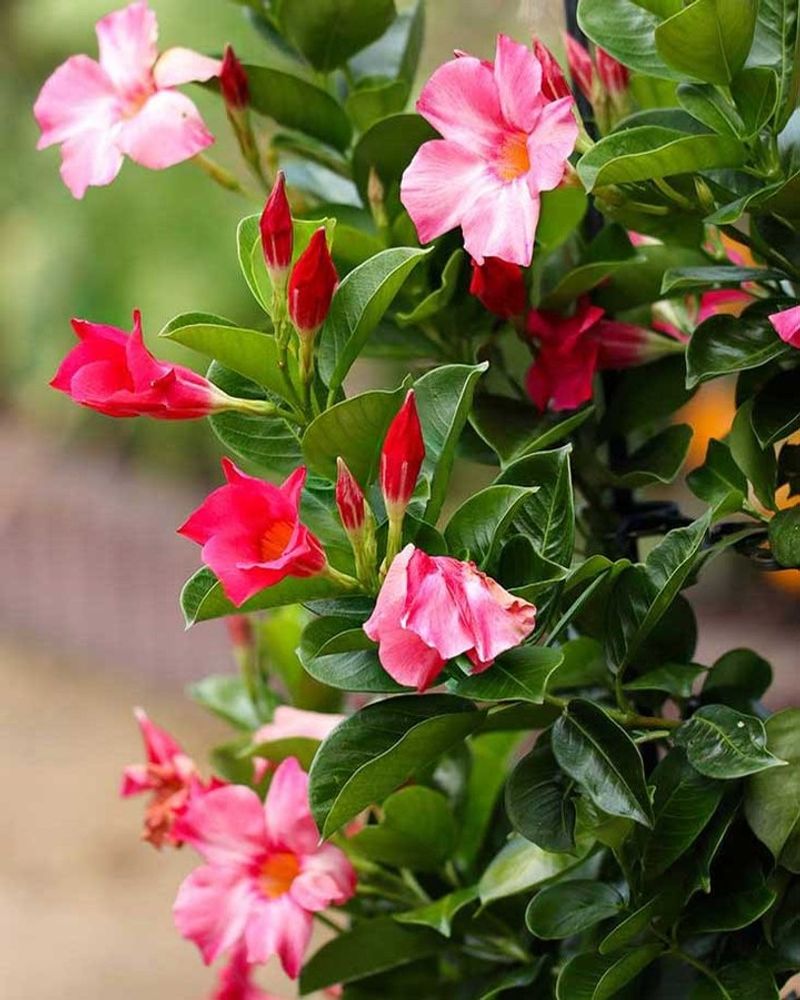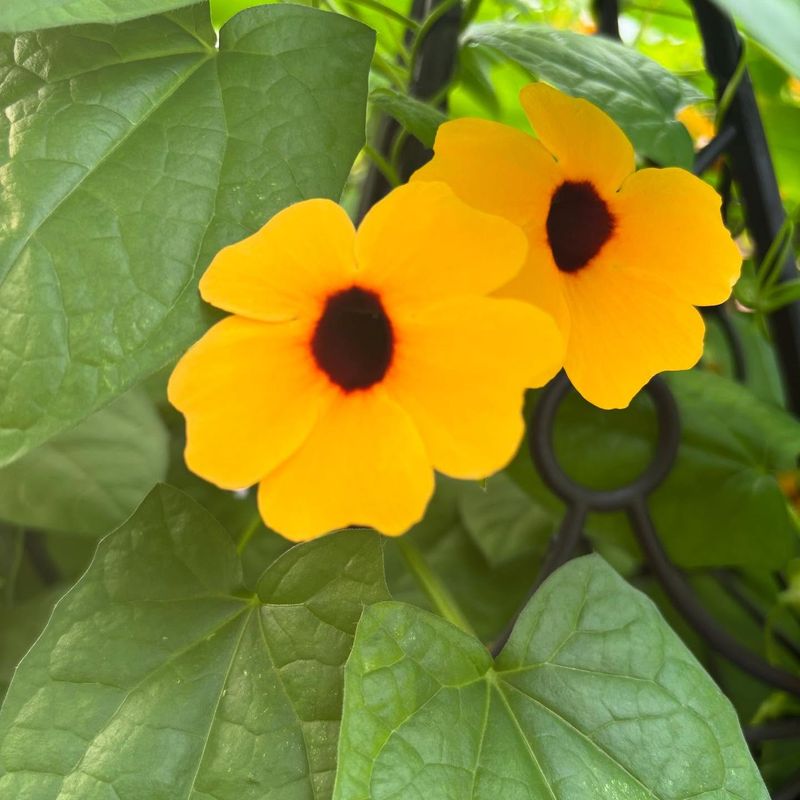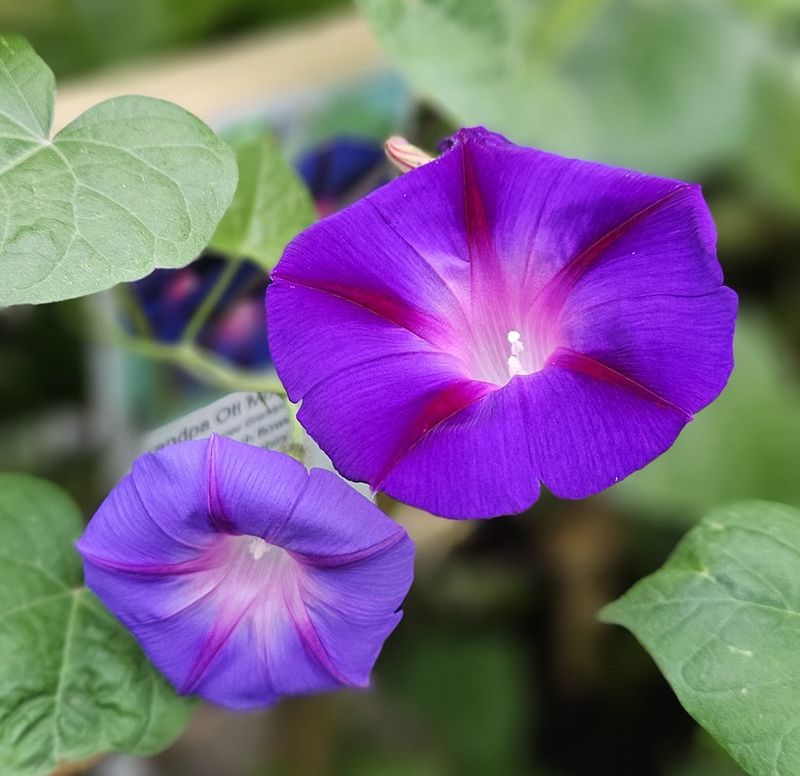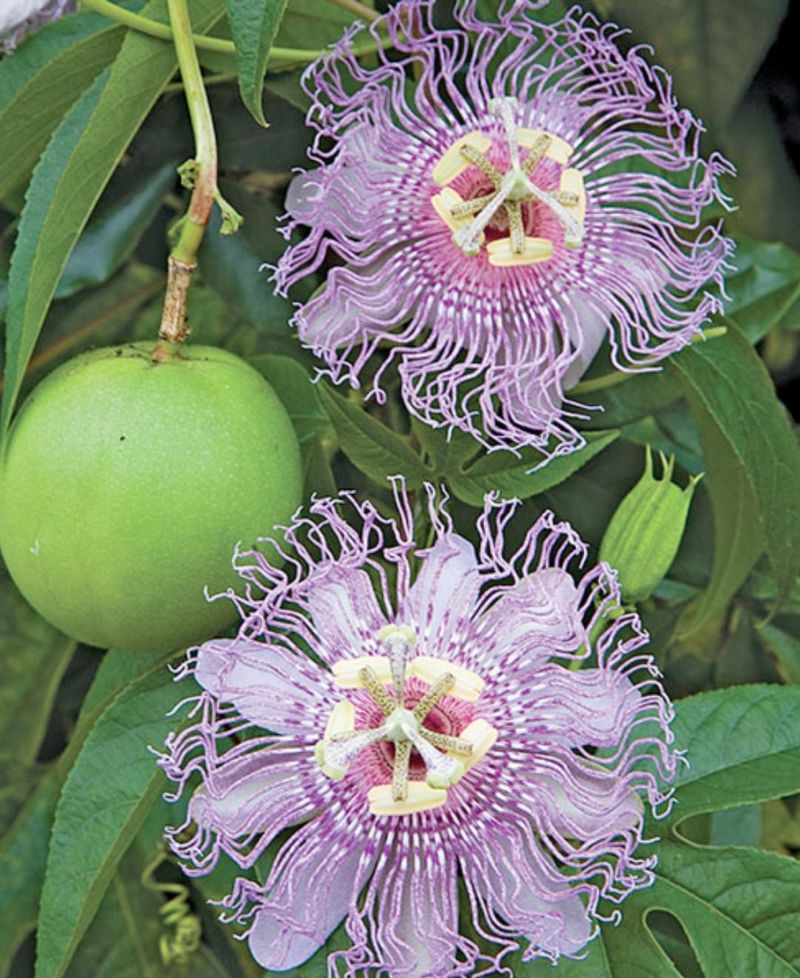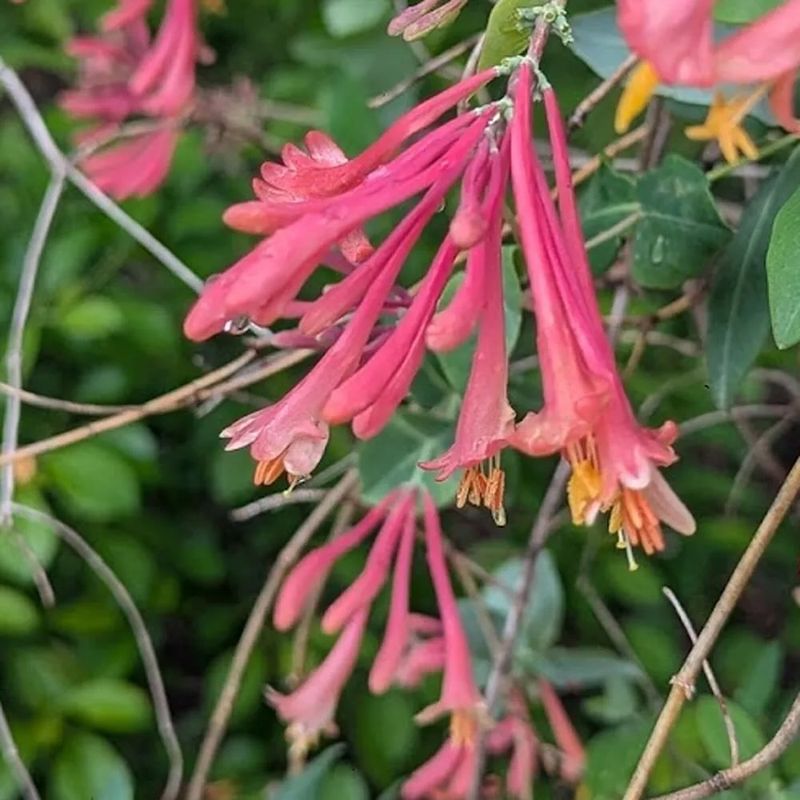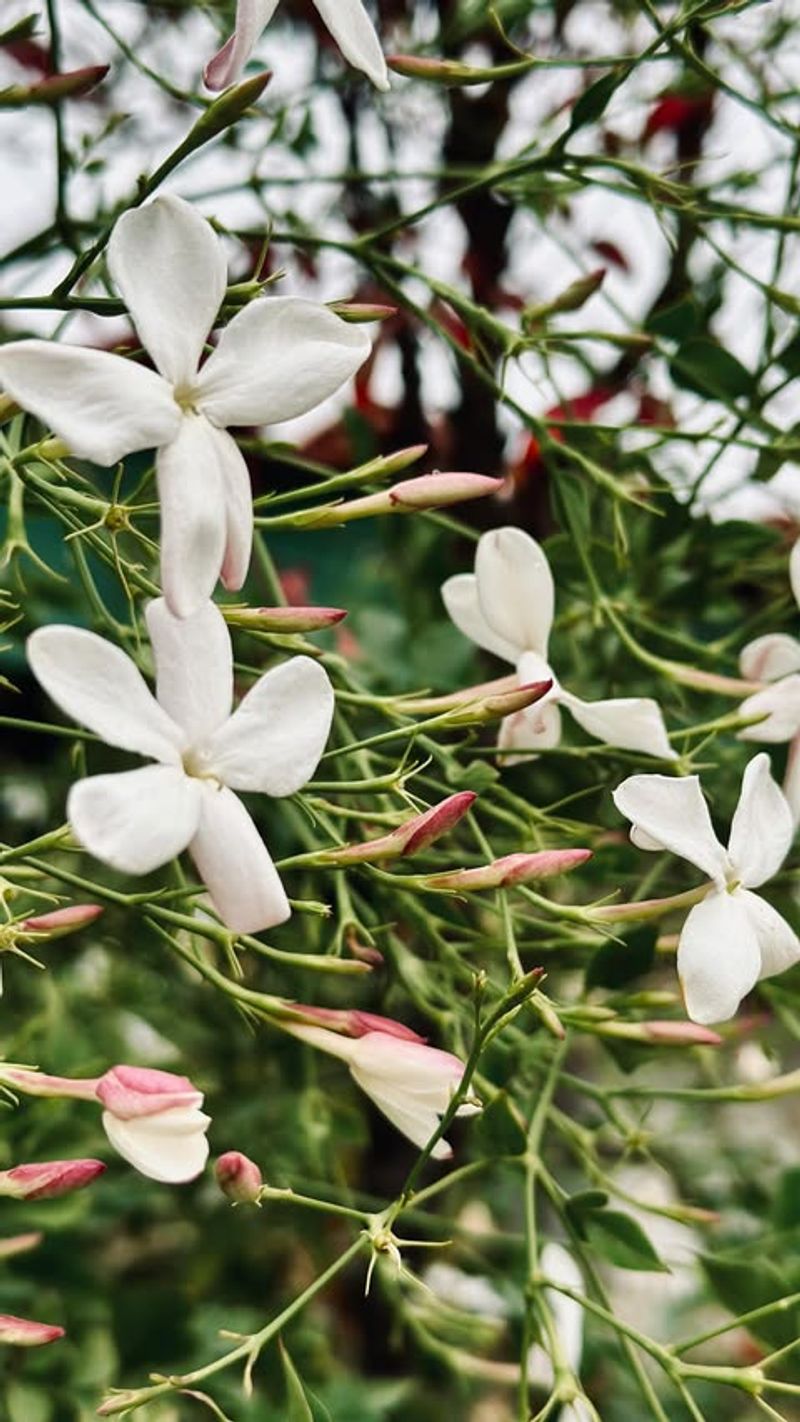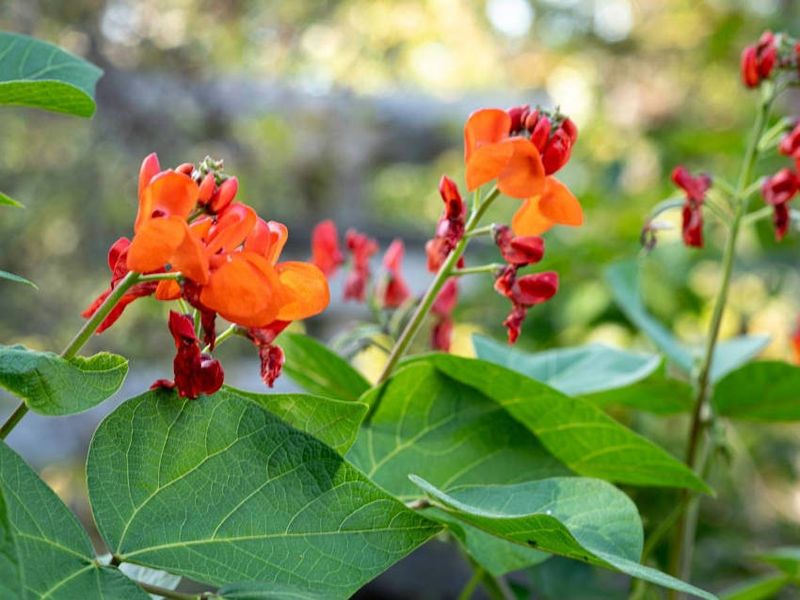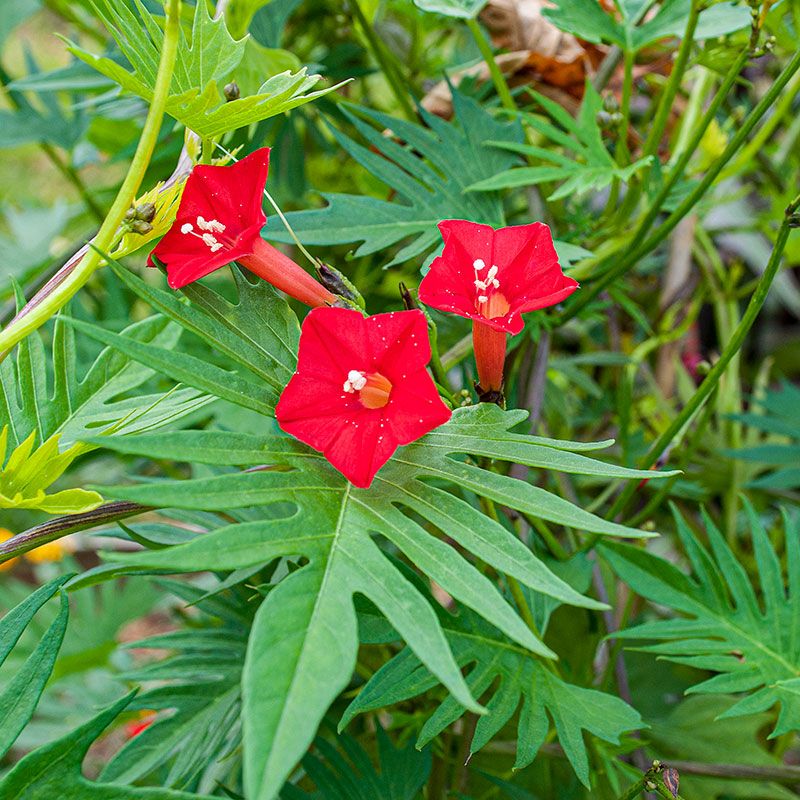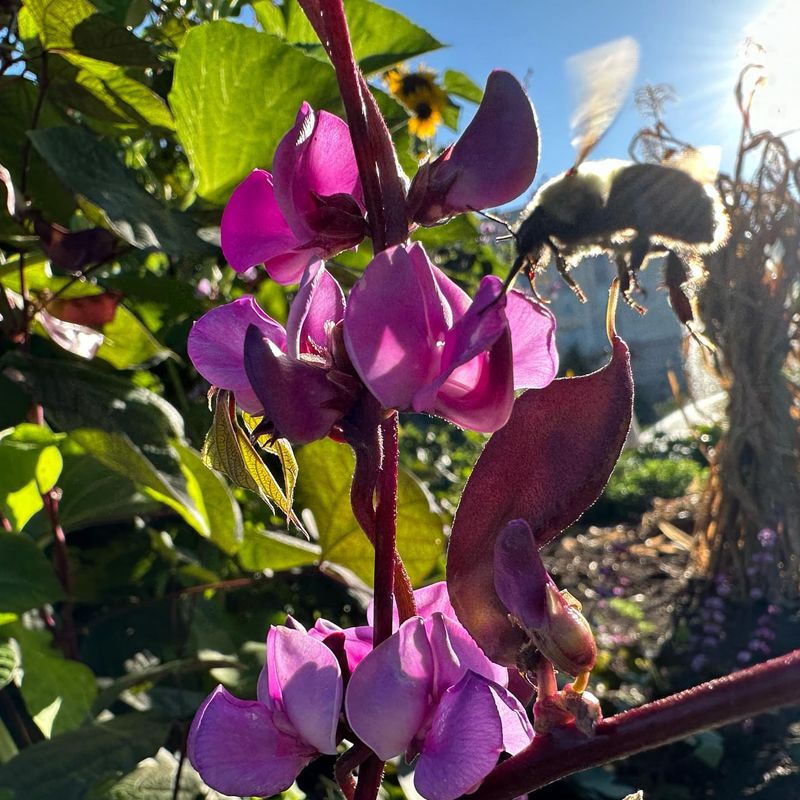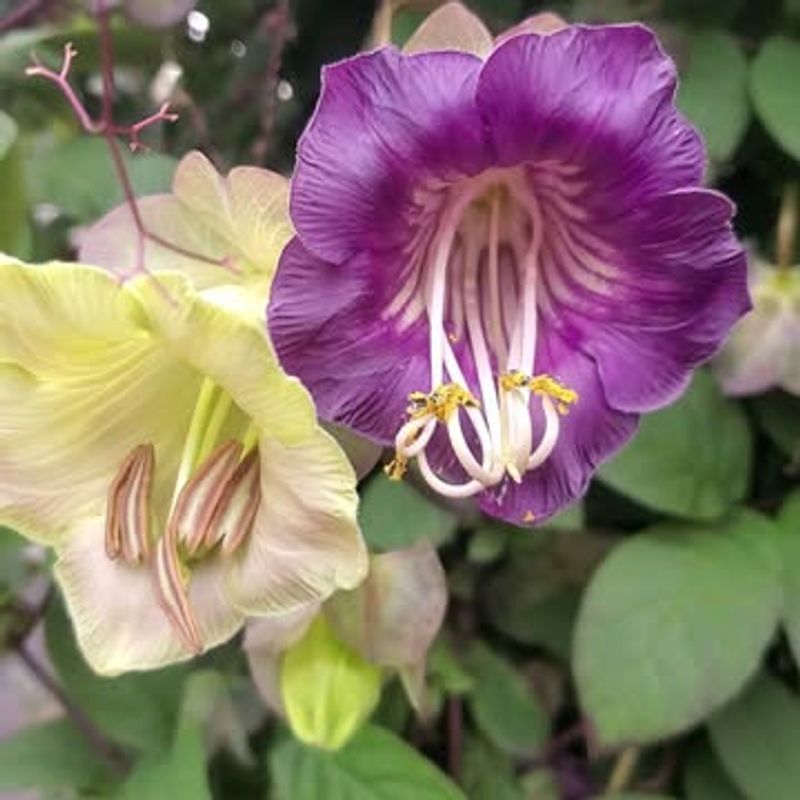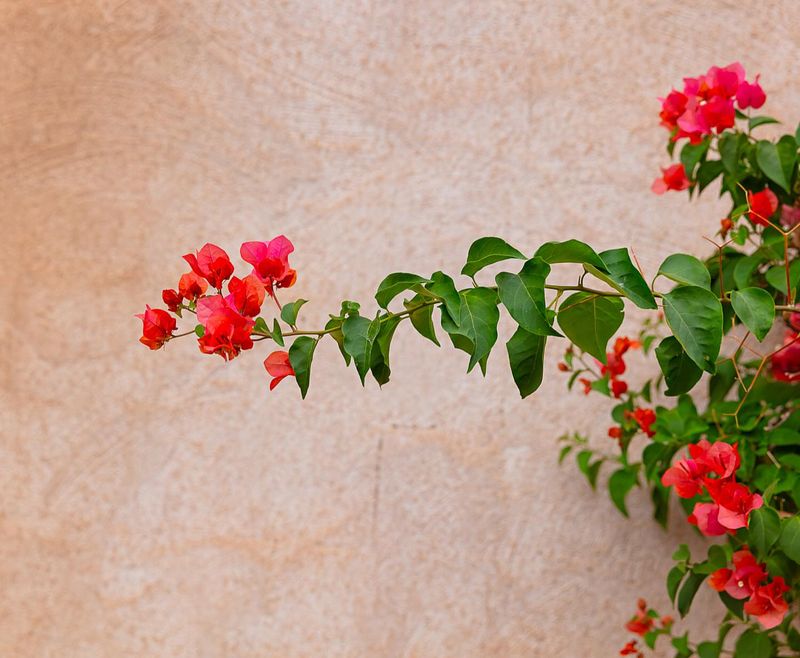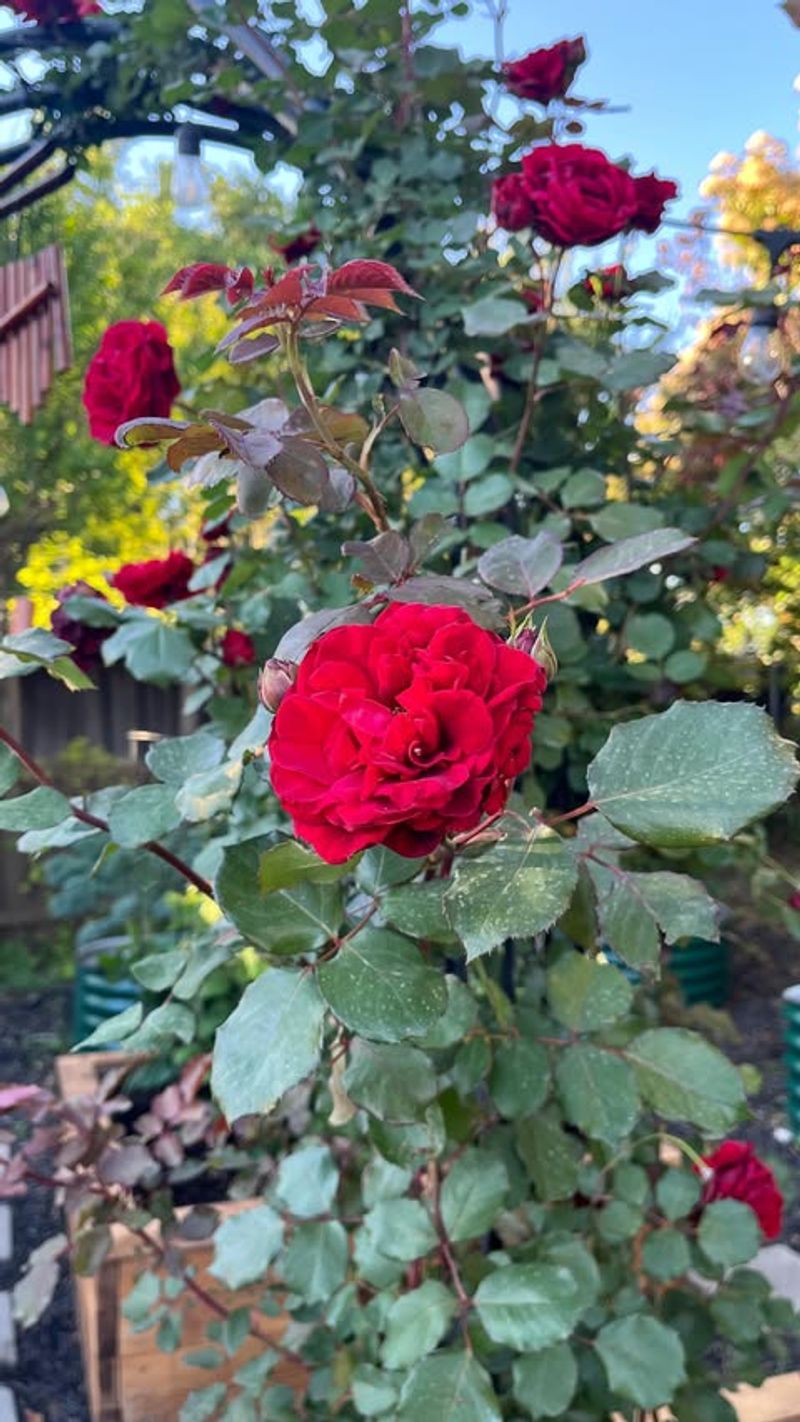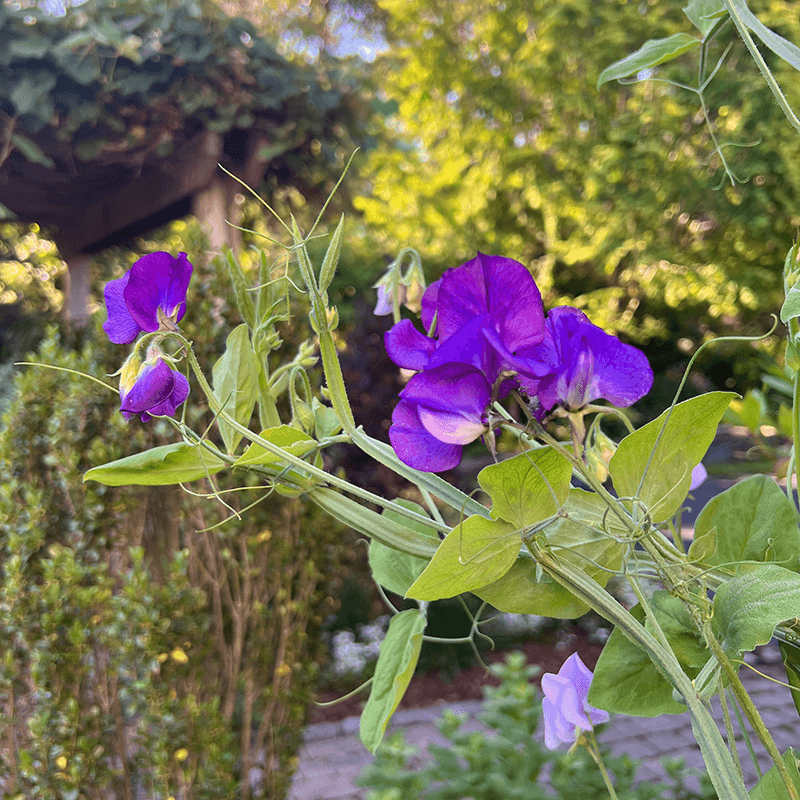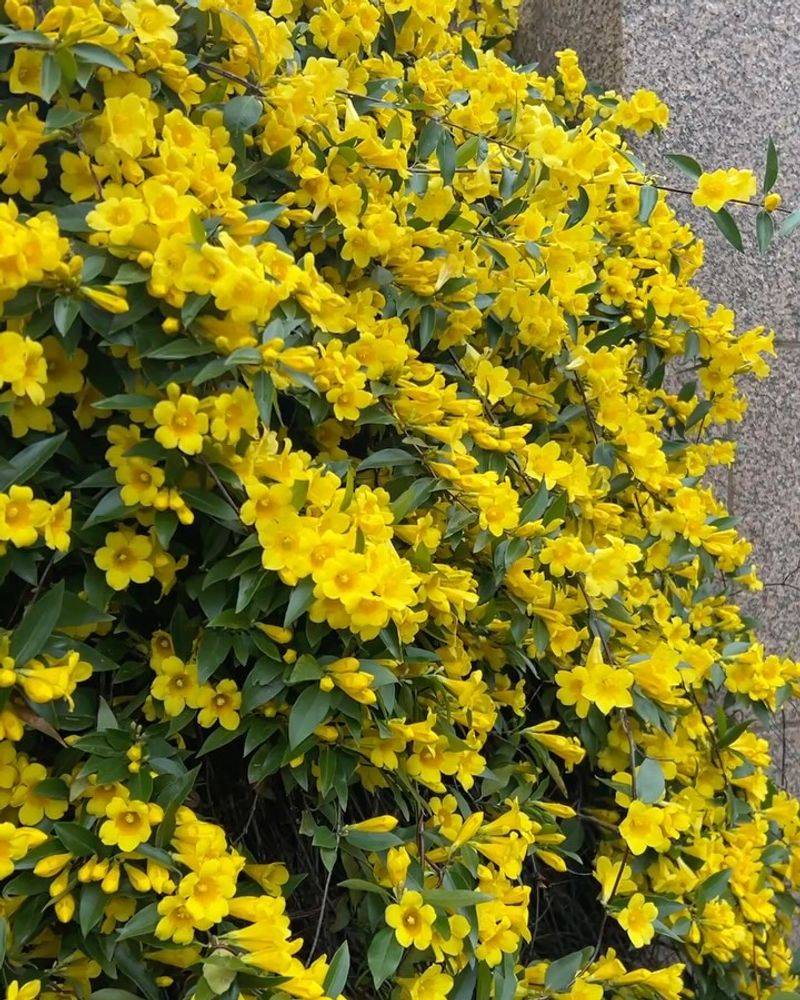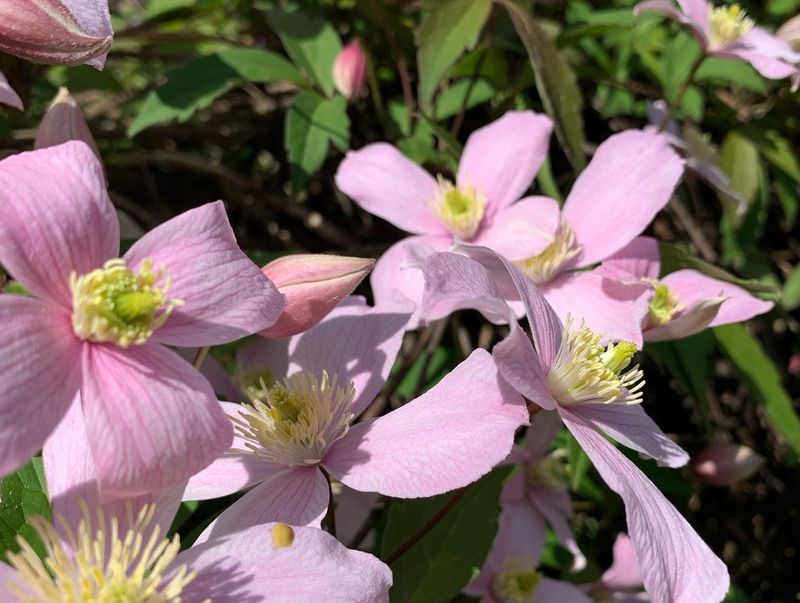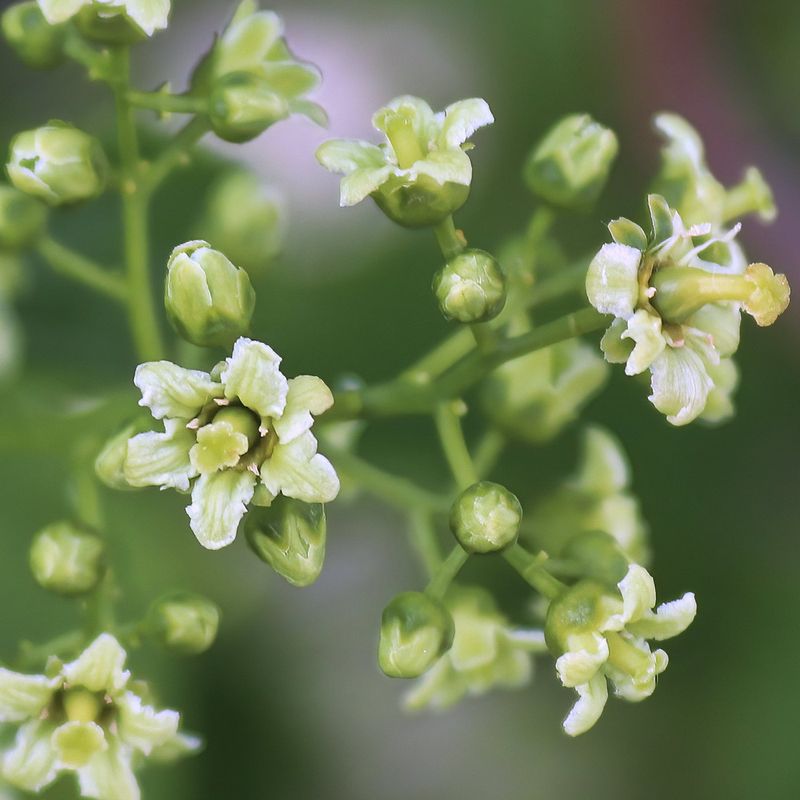Want to bring bold vertical color to your garden all summer long? Climbing vines are a beautiful way to dress up fences, arbors, and trellises with cascading blooms. But not all vines are equally committed—some burst into color then fade fast.
My go-to favorites for nonstop flowers include clematis, trumpet vine, and black-eyed Susan vine. These climbers stay vibrant from early summer into fall, adding texture and color that just won’t quit. Others, like morning glory or sweet pea, start off strong but often fizzle by midseason.
If you’re after consistent wow factor, choosing tried-and-true bloomers will keep your garden reaching for the sky—and looking gorgeous while doing it.
1. Clematis ‘Jackmanii’
The rich purple blooms start appearing in June and keep coming until September in most gardens. My neighbor’s ‘Jackmanii’ has been putting on a reliable show for nearly a decade with minimal fussing.
Growing this beauty is straightforward once established. It prefers having its roots in shade while the vines climb into sunlight. A layer of mulch helps keep those roots cool during hot spells.
When planting, set it slightly deeper than it was in the nursery pot – this encourages multiple stems to develop from below ground level.
2. Mandevilla
Summer heat only makes these tropical vines bloom more profusely. The trumpet-shaped flowers come in pink, red, or white, standing out dramatically against glossy dark green leaves.
Growing them in containers works perfectly for northern gardeners like me. I bring mine indoors before frost and keep it as a houseplant through winter. Even with less light, it often continues producing some flowers.
Fertilize every two weeks during summer for the most impressive blooming. They’re surprisingly forgiving about inconsistent watering once established.
3. Black-Eyed Susan Vine
Starting from seed in spring, these vines waste no time reaching 6-8 feet by midsummer. The cheerful orange or yellow flowers with dark centers appear non-stop from June until frost.
Last summer, mine completely covered an unsightly chain-link fence by July. The hotter it got, the more flowers appeared – exactly what you want in a summer vine.
Morning sun with afternoon shade seems to produce the best results in my experience. They’re not picky about soil as long as it drains well, making them perfect for beginner gardeners.
4. Morning Glory
From humble seeds planted in late spring emerge vines that can climb 10 feet or more. The heart-shaped leaves create a lush backdrop for the trumpet-shaped flowers that open fresh each morning throughout summer.
Self-seeding happens readily in many gardens. I’ve had volunteers pop up in the most unexpected places, turning a plain fence into a flowering feature without any effort on my part.
Avoid rich soil or too much fertilizer – struggling slightly produces more flowers. These vines bloom best when slightly stressed rather than pampered.
5. Passion Flower
The exotic-looking blooms belie how tough these native vines really are. Each intricate flower lasts only a day, but new ones keep opening from June through September.
Hardy in zones 6-9, these vines often die back to the ground in winter but return with vigor in spring. Mine took two years to really get established, but now it’s unstoppable.
Beyond the flowers, watch for the egg-shaped fruits that follow. They’re edible when fully ripe and add another dimension of interest to this summer-long performer.
6. Honeysuckle
Native trumpet honeysuckle offers coral-red tubular blooms that hummingbirds can’t resist. Unlike its invasive Japanese cousin, this well-behaved vine flowers from spring through fall without taking over.
The semi-evergreen foliage stays attractive even when not in bloom. My specimen survived a record-breaking drought two summers ago while still producing flowers.
Pruning after the first major flush of blooms triggers another heavy flowering period. I’ve found it grows best with support but doesn’t cling as aggressively as some vines.
7. Jasmine
Evening walks become magical when summer jasmine is in bloom nearby. The intensely fragrant white flowers appear continuously from June through September.
Growing to about 15 feet, this vine needs sturdy support and regular training. After trying several methods, I’ve found that weaving the flexible stems through trellis openings works better than tying.
Hardy in zones 7-10, jasmine can be grown in containers and overwintered indoors in colder regions. Even with less than ideal conditions, it’s remarkably generous with its blooms and scent.
8. Scarlet Runner Bean
Edible and ornamental, these vigorous vines produce bright red flowers that attract hummingbirds all summer long. The bonus: you’ll harvest tasty beans if you don’t deadhead all the spent blooms.
Growing up to 10 feet in a single season, they quickly transform a bare trellis into a flowering feature. I’ve grown them on a simple tepee of bamboo poles with great success.
Direct sow seeds after all danger of frost has passed. They germinate reliably and grow quickly, making them perfect for impatient gardeners who want fast results.
9. Cardinal Climber
Ferny, deeply-cut foliage creates the perfect backdrop for the small but numerous star-shaped red flowers. The contrast between the delicate leaves and bright blooms keeps catching my eye all summer.
Annual in most regions, these vines grow rapidly from seed sown directly in the garden after soil warms. Nicking the hard seed coat and soaking overnight speeds germination considerably.
Reaching about 10 feet tall, they’re perfect for covering narrow spaces or small trellises. Despite their delicate appearance, they handle heat and humidity like champions.
10. Hyacinth Bean
Purple-tinged stems and leaves set this vine apart even before the lavender-purple flower clusters appear. The show continues with shiny purple seed pods that look like they belong in a floral arrangement.
From planting to flowering takes just about 8 weeks. My vines typically start blooming in July and don’t stop until frost cuts them down.
Growing these beans couldn’t be simpler – they thrive on neglect once established. Just provide something to climb on and stand back. They’re particularly stunning growing up dark-colored structures that highlight their purple tones.
11. Cup And Saucer Vine
Starting as pale green bells, the flowers mature to deep purple, creating a two-tone effect that lasts from midsummer until frost. The rapid growth rate is almost unbelievable – up to 25 feet in a single season.
Starting seeds indoors 6-8 weeks before last frost gives them a head start. I’ve found they germinate best when pressed into the soil edgewise rather than flat.
The large, cup-shaped flowers have a subtle fragrance most noticeable in the evening. Despite their exotic appearance, they’re surprisingly undemanding once established in a sunny spot.
12. Bougainvillea
The vibrant paper-like bracts in magenta, purple, orange, or white create a tropical feel wherever they grow. These woody vines flower most heavily during the hottest months when many other plants have given up.
Growing them in containers allows northern gardeners to enjoy their long-lasting color. Mine spends summers outdoors and winters in a cool, bright room where it continues to bloom sporadically.
Slightly stressing these plants by keeping them slightly pot-bound and letting them dry between waterings encourages more prolific flowering. Too much kindness results in lush green growth but fewer colorful bracts.
13. Climbing Roses
Modern climbing roses like ‘Don Juan’ or ‘Zephirine Drouhin’ rebloom reliably throughout summer, unlike their once-blooming ancestors. The fragrant flowers appear in flushes from June until September or beyond.
Training the canes horizontally rather than vertically stimulates more flowering shoots to develop. After discovering this trick, my climbing roses produced nearly twice as many blooms.
Deadheading spent flowers promptly encourages faster rebloom. A monthly feeding with rose fertilizer keeps them producing new flowering shoots all season long.
14. Wisteria
Despite their breathtaking spring display, most wisteria varieties are one-hit wonders that fizzle after May. The spectacular pendulous flower clusters create such high expectations that their green summer presence feels like a letdown.
After waiting seven years for my Chinese wisteria to bloom, I was disappointed when the flowers lasted barely two weeks. The rest of summer brings nothing but rampant growth that requires constant pruning.
Some varieties produce a small second flush in late summer, but it’s never comparable to the spring show. If you’re after summer-long flowers, this vigorous vine will likely disappoint despite its spring magnificence.
15. Annual Sweet Pea
The heavenly fragrance of sweet peas makes their early departure all the more disappointing. These cool-season annuals typically bloom for just 3-4 weeks before heat causes them to decline rapidly.
My attempts to extend their flowering by planting in partial shade helped only marginally. By July, even with regular deadheading and optimal care, they inevitably succumb to summer heat.
The ephemeral nature of these vines makes them poor choices for season-long interest. For northern gardens with cool summers, they might perform better, but for most of us, they’re spring flowers that don’t transition well into summer.
16. Carolina Jessamine
The bright yellow trumpet flowers create a spectacular spring display but don’t repeat through summer. After the initial March-April flowering period, this evergreen vine offers only green foliage for the remainder of the growing season.
Growing in my zone 7 garden, jessamine reliably blooms each spring but has never produced a significant second flush despite what some catalogs promise. The glossy foliage remains attractive, but flowers are strictly a spring feature.
For those seeking year-round interest, the evergreen nature partly compensates for the brief flowering period. Still, if summer flowers are your priority, this southeastern native will disappoint after its spring performance.
17. Spring-Blooming Clematis
Unlike their repeat-blooming cousins, spring-flowering clematis varieties like C. montana put on a single spectacular show in April-May. After that initial flush, they contribute only green foliage to the garden through summer and fall.
The vigorous growth can reach 20-30 feet, covering arbors and fences with green leaves after flowering. My C. montana ‘Rubens’ blooms heavily for about three weeks in May, then nothing for the rest of the year.
These varieties require little pruning compared to repeat bloomers, which is their main advantage. For summer flowers, though, you’ll need to look elsewhere or plant them alongside later-blooming companions.
18. American Bittersweet
Often grown for its bright fall berries, this native vine produces inconspicuous greenish flowers in late spring that most gardeners barely notice. Throughout summer, it’s simply a green vine with no particular ornamental qualities.
The fall transformation comes too late for summer garden enjoyment. I planted one hoping for summer interest but found it contributed little to the garden until September when the berries began to color up.
Male and female plants must be grown together to produce the colorful fruits. This requirement, combined with its aggressive growth habit and lack of summer flowers, makes it less than ideal for gardens focused on summer color.

